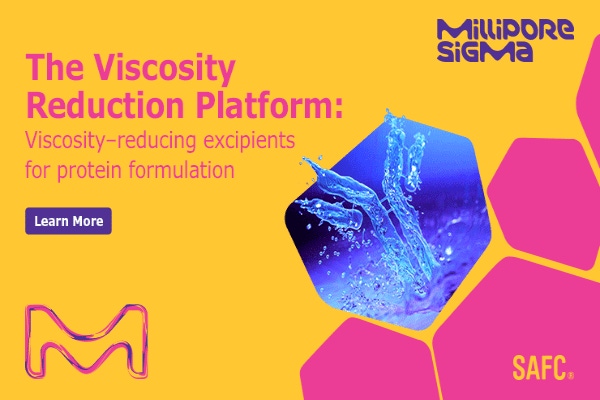Voices of Biotech
Podcast: MilliporeSigma says education vital to creating unbreakable chain for sustainability
MilliporeSigma discusses the importance of people, education, and the benefits of embracing discomfort to bolster sustainability efforts.
November 8, 2021

Sponsored by Millipore Sigma
Protein viscosity is one of the major obstacles in preparing highly concentrated protein formulations suitable for subcutaneous (subQ) injection. Highly viscous protein solutions would require a significant force to be applied to the syringe for injection. As a result, the patient could experience a considerable amount of pain. In many cases, injectability would not be possible.
When characterizing protein viscosity behavior, one can differentiate two different concentration regimes. At very low concentrations below about 75 mg/mL, proteins are rarely viscous. When increasing the concentration to between 100 and 200 mg/mL, some proteins exhibit elevated viscosity exceeding the limit of injectability. At this concentration regime, several proteins exhibit an affinity for self-interaction, i.e. forming transient clusters that give rise to elevated viscosity. At concentrations above 200 mg/mL, without a specific affinity for self-interactions, said protein-protein interactions take place. While viscosity-reducing excipients can affect proteins exhibiting either of these interaction patterns, they are likely to be more efficient at protein concentration regimes below 200 mg/mL.
This white paper evaluates the viscosity-reducing capacities of excipients and excipient combinations. It shows the over-additive effect of using two excipients together and addresses how excipients’ viscosity-reducing ability depends on pH. The results show the effect of protein viscosity on injection force and highlight the platform’s ability to balance viscosity reduction with protein stability. The case studies presented demonstrate that using a combination of two excipients at lower concentrations instead of a single excipient at a higher concentration enables balancing protein viscosity and protein stability in a favorable way.
You May Also Like